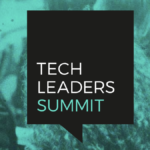Gartner predicts that through 2019, 90% of large organisations will have hired a CDO — but there’s a catch: only 50% will be hailed a success.
CDOs face a myriad of obstacles, both internally and externally — be it government regulations or change management — however, exiting project mode and bringing D&A initiatives to production is often the most difficult for CDOs to overcome.
Product-centric operating models
Recently, Gartner decided to figure out what successful CDOs were doing differently. The common denominator: they were using product management concepts to progress their D&A initiatives.
According to Mario Faria, VP and programme director at the Gartner Research Board, technology spend has traditionally been structured as a pool of ongoing ‘run the business’ costs and a separate portfolio of discrete capital projects that have a clearly defined beginning and end. However, successful CDOs are aligning funding, development resources and ongoing management support around a set of enduring product lines.
This evolution is so significant that Faria said that the CDO has now reached its fourth iteration and should be known as a CDO 4.0.
He said: “CDO 1.0 was focused exclusively on data management. CDO 2.0 started to embrace analytics. CDO 3.0 led and participated quite heavily in digital transformation. This fourth version of the CDO is focused on products and on managing profit and loss, instead of just being responsible for driving D&A projects and programmes.
Data engineer: The ‘real’ sexiest job of the 21st century
“This shift to product-centric delivery models entails co-locating CDOs into business units and strives for constant improvement rather than siloed project metrics,” continued Faria.
Bill Swanton, distinguished research VP at Gartner, added that this shift towards product-centric application models didn’t come about randomly. It goes hand-in-hand with the adoption of agile development methodologies and DevOps.
“Business leaders are generally unhappy with the speed with which they get application improvements and how they work. Given that no IT organisation gets anywhere near enough funding to do everything everyone wants when they want it, product-centric approaches allow faster delivery of the most important capabilities needed,” he said.
According to Gartner, in a product line management model, product lines are funded based on the business capabilities they support. Common or shared capabilities — such as infrastructure, technology, D&A — are funded based on the anticipated and aggregated needs of the product lines they support.
Minimum viable data products
For CDOs to survive in their roles, they must grasp the importance of product management in driving successful growth and scale. Fundamental to the role’s definition is vision, objectives, goals, scope and metrics — specifically, the metrics for transitioning toward a customer-centric approach for innovation.
In this day and age, it is not the biggest that survives; it’s the quickest. The sooner a CDO can deliver their data product; the sooner feedback can be received and incorporated into the next iteration.
Lean startup for tech entrepreneurs
For this reason, CDOs might want to consider reading The Lean Startup, a book by Eric Ries, in which the author looks at a method for building a company by developing a product to the minimum level — a minimum viable product — and as rapidly as possible so that it can be tested. If the tests are successful, then the product is extended and tested some more. Core ideas to the lean startup model include talking closely with customers, testing, and where appropriate, pivoting.
How to become a lean CDO
Before embarking on this journey, CDOs should start by establishing what the essential components are for their D&A initiatives to succeed. Then they should try to figure out the cheapest and fastest way to test it.
Once they’ve planned how you’ll test it, they should create a minimum viable data product. This doesn’t have to be an overnight success; it just needs the necessary features for the test to yield meaningful insights.
The future of the CDO: Chief Data Officers need to sit near the top
Once the CDO has a minimum viable data product, they need to find a way to measure feedback. To do this, they should come up with a baseline of metrics. For example; how well did it fulfil the needs of the business? Did employees engage with it? Did it comply with regulations?
If overall, it works well, CDOs can focus on refining their D&A products. Ultimately, the approach is all about ditching elaborate planning to lead with experimentation and ditching intuition in favour of real feedback.
 Tech Leaders Summit
Tech Leaders Summit
On 12 September, Information Age will once again host Tech Leaders Summit at the Royal Lancaster Hotel, London. This year, speakers at the UK’s most innovative tech leadership conference — including the CTOs of RBS and Ofcom and Sarah Burnett from Everest Group — will help dissect subjects, such as intelligent automation, emerging tech, agile and cultural transformation. With plenty of opportunties to network throughout the day, this event is not be missed. To find out about the latest innovations and how to lead your organisations and customers through the disrupted era, register here.







